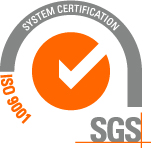Treating COPD with oxygen therapy
- Posted on
- By Oxigo
- 1

Treating COPD with oxygen. Read more!
COPD is a collective name for chronic bronchitis and emphysema. While the symptoms of this disease have a large impact on daily living, many people suffer from COPD for years without knowing it. Treatment with oxygen offers a solution for COPD patients. We will therefore elaborate on COPD and oxygen in this blog.
COPD symptoms
The amount of oxygen in blood (the oxygen saturation) fluctuates between 95 and 100 percent in healthy people. COPD patients often have to deal with a much lower amount. They suffer from an oxygen deficiency. The lungs no longer function as they should, leading to a lessened amount of oxygen in the blood. The consequence: breathlessness, tiredness, and chronic coughing. The blood pressure in the lungs will sometimes rise, which could lead to damage to organs such as the heart. If you experience a lot of discomfort due to low oxygen saturation, a lung physician could prescribe oxygen.
Treating COPD
The following things are of crucial importance in treating COPD, reducing complaints and improving quality of life:
- Quit smoking: Smoking is the cause of COPD in more than 85% of the cases. It is therefore necessary to quit smoking as quickly as possible. Smoking has a negative effect on COPD’s treatment as well.
- Medication to relieve symptoms: Many COPD patients use liquid medication, which they can inhale by using a nebuliser.
- Physiotherapy for the lungs/lung rehabilitation: With the help of a physiotherapist, you will do exercises that help in handling breathing problems in better ways. Medical devices such as respiratory trainers help you in developing stronger breathing muscles.
- Oxygen therapy: Treatment with oxygen helps to tackle the oxygen deficiency in your blood. A big advantage of oxygen is that you don’t have to visit a hospital for it. You can use oxygen at home or while travelling.
COPD and oxygen therapy
The goal of oxygen therapy is to reduce shortness of breath and tiredness. Pure oxygen will lead to a replenishment of oxygen in the body. Oxygen therapy provides a better quality of life and due to this (possibly) a longer life for many COPD patients. Curing the disease, on the other hand, is not possible. Oxygen only tackles the symptoms.
“Oxygen is not addictive.”
COPD and oxygen at home
Most people predominantly use oxygen at night at first, and later on during the day. They often get oxygen through a stationary oxygen concentrator. The oxygen device filters nitrogen out of the air and provides pure oxygen. The oxygen flows through the oxygen tube and nasal cannula into the airways. Most stationary oxygen concentrators provide up to 5 litres of oxygen per minute, while some of them, ‘high flow’ concentrators, provide up to 10 litres per minute. Stationary oxygen concentrators run on AC power, so make sure to always keep an oxygen tank on hand. That way,
you will not end up without oxygen during a power outage.
COPD and oxygen on the road
You can also use oxygen whilst doing groceries or travelling to your lodging address. Normally, oxygen is provided through an oxygen tank. Aside from that, there also exist small, portable oxygen concentrators (mobile concentrators) you usually carry on your shoulder or back. This is a lot more comfortable than carrying an oxygen tank. All portable concentrators in our product range have been approved by the FAA (Federal Aviation Administration). As such, you can safely take them with you during air travel. However, we do advise to contact your airline in advance. Ask for their
terms. It is, for example, your own responsibility to make sure batteries are sufficiently charged.
How many litres of oxygen for COPD?
You might have questions about administering oxygen for COPD. Every oxygen user has his or her own specific oxygen needs, fitting the disease and its stage. A physician can advise you best about the necessary amount of oxygen per minute. In practice, many oxygen users use 1 to 2 litres per minute. This can be more or less temporarily. While COPD progresses, the oxygen need often rises. During your oxygen therapy, it is advisable to occasionally measure the amount of oxygen in your blood with a pulse oximeter. Should your oxygen saturation stay low during the therapy, this might be a sign that more oxygen needs to be administered. It could also mean that there is an acute medical problem.
When you have questions or are in doubt about your health, always contact a physician. We are not doctors, and as such are not qualified to diagnose or provide medical advice.
What are the benefits of oxygen therapy?
COPD and oxygen are inseparable. Treatment with oxygen can give you a lot. Many users experience less shortness of breath and can do more things than before. Happiness often lies in the small things and these things are possible again due to oxygen. Are you gardening, taking a nice walk in the park, or golfing with your lover? Or are you daring and taking a long journey?
Relatively few side effects…
A big advantage of treating COPD with long term oxygen therapy is the fact that it has relatively few side effects, if you administer the right amount of oxygen. Too much oxygen can lead to a headache. Too little oxygen is not effective enough for treatment. Stationary oxygen concentrators and oxygen tanks give a continuous flow. Oxygen will then flow into your airway uninterrupted, which could cause dryness of the mucus membranes in your nose. Especially if you use oxygen every day. A humidifier could alleviate this, if it is used hygienically. A moisturizing water-based nasal gel can help as well. And finally: oxygen is not addictive.
… but a challenge sometimes
The moment you have to start oxygen therapy will sometimes lead to sadness and stress, for yourself and your direct environment. You will realise that you are ‘dependent’ on oxygen administration for the rest of your life. It is absolutely normal that this has an effect on your mood. Take your time to process this. You could get help from a professional, such as a nurse practitioner, or a psychologist. If you have questions about oxygen concentrators, you can always contact us. We are there for you.
Safety first
To ensure safe use of oxygen and the effectivity of oxygen therapy you are absolutely not allowed to smoke. Oxygen accelerates fires. Clearly ask people in your environment not to smoke in the vicinity of the concentrator, tank, or liquid oxygen device. Other matters you should be careful with are stoves, tea lights, and candles. In any case, it is advisable to place a safety valve between your nasal cannula and the oxygen tube. This is already mandatory in some countries. Never use nasal ointments or gels containing oils or fats. Choose water-based nasal gels instead.
Further reading:
- Website NHS – Treating COPD
- Blog post "On holiday with a portable oxygen concentrator"
- Blog post "Stationary oxygen concentrators"
- Stationary oxygen concentrators and portable oxygen concentrators






Thanks for sharing, this article about treating copd with oxygen therapy is very helpful.